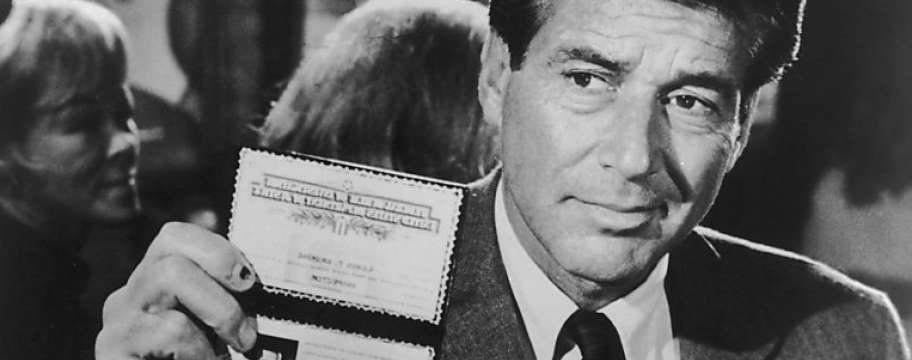
Dempsey and Makepeace
1985 - United KingdomJames Dempsey was a New York cop working out of Manhattan's Ninth Precinct where he had uncovered corruption. That ultimately led him to shooting dead his partner, and in order to secure his own safety he was transferred to Britain. In the UK Dempsey went to work for a covert division of Scotland Yard known as SI10, and there he was teamed up with Lady Harriet Makepeace, a stunning blond graduate with a Cambridge degree in science and a distant claim to the throne, who had chosen to pursue a career in the police.
Whilst the former Vietnam veteran was brash in his actions and quick to pull out his .357 Magnum, his new partner, a former archery champion was more disposed to using her influence with friends in high places. The result was a high adrenalin, all-action series including obligatory car chases and beatings up of London's criminal fraternity (as well as international drug-pushers and terrorists) in a style that took over where The Professionals left off.

Michael Brandon was new to British TV viewers but came with a reputation of being a one-time Brooklyn gang member, born Michael Feldman into a working-class family in New York, "My father was a mechanic, and we weren’t wealthy." He said in interview. "Neither of my parents finished school. I had to do my growing up on the streets. This was not the life I wanted. I wasn’t a popular kid. I was a Teddy Boy with a switch blade, lost in my own particular jungle." At the of age nine, he and his family moved to Valley Stream, New York, a village in Nassau County, on Long Island where he attended Memorial Junior High and graduated from Valley Stream Central High School. Phenomenally bright, Brandon was awarded a scholarship to study law, but he turned it down when, at the age of 17, he woke up paralysed from the waist down due to an infection in his spine and was bedridden for six months. He had surgery to remove, in his words, "a chunk of my spine" and he had to learn to walk again. This was enough for him to reassess where his life was headed and, encouraged by a girlfriend at the time who told him he should be an actor, he went to study at the American Academy of Dramatic Arts, making his professional debut on Broadway before turning to cinema.
He played the lead in the romantic comedy Lovers and Strangers and found himself acting alongside Al Pacino in the play Does a Tiger Wear a Necktie and, in 1973, starred with Kim Novak in The Third Girl From The Left. He was 27, she was 40 and they soon began an affair. He later described as one of the 'three loves of my life.' There were various alleged affairs with older women including Dallas star Linda Gray and Cary Grant’s former wife Dyan Cannon, and in 1976 he married Bionic Woman star Lindsay Wagner, which he described as 'a mistake.'
Glynis Barber was familiar to fans of Blake's 7 (as Soolin) and BBC2's adaptation of the Daily Mirror wartime cartoon-inspired series Jane. Born Glynis van der Riet in Durban, South Africa, at the age of five she moved to Johannesburg with her mother after her parents divorced. Despite her extreme shyness as a child, Glynis began to discover her ambition during her teenage years. Classmates often nominated her for school productions, and she eventually joined a speech and drama group where she explored literature. At the age of fifteen, inspired by a tutor, she immersed herself in the works of Shakespeare, reading them all within a fortnight. Her mother and stepfather agreed that after she had finished school, she could go to London to study drama. Tragically, when Glynis was seventeen her mother died. Upon graduating she chose to stay in England and landed her first job at Chelmsford Rep as an Acting/ASM. She married the actor Paul Anthony-Barber in 1977, but they were divorced in 1979. Many parts soon followed both in television and theatre, including Once In A Lifetime directed by Trevor Nunn for the RSC and Hamlet playing Ophelia. For both Brandon and Barber, Dempsey and Makepeace was their big break.

Ray Smith starred as the pair's boss, loudmouth Liverpudlian Gordon Spikings and Tony Osoba (Jock in the comedy series Porridge) appeared as DS Charles Jarvis. The series was devised by Jesse Carr-Martindale but Ranald Graham created the TV format in the 105-minute pilot, Armed and Extremely Dangerous.
The gritty drama attracted more than 20 million viewers in the UK and was shown in more than 70 countries. But it was never really about the crime. The programme mainly worked because of the chemistry between the two stars - and not only on screen; romance blossomed and the pair eventually married in real life.

Published on April 5th, 2024. Written by Laurence Marcus for Television Heaven.










